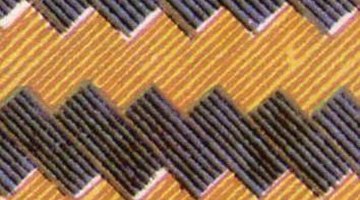How to Remove Grass-Cloth Wallpaper
Grass-cloth wallpaper was popular in the 1970s and 80s. This means that if you want to remove grass-cloth wallpaper, it might be older than you are. The older wallpaper is, the more difficult it is to take off. The glue gets brittle over time. The previous owner might not have prepped the walls properly.

Things You Will Need
- Sponges
- Bucket of hot water
- Paint scraper
- Wallpaper stripper
Tip
Prime before you put up any wallpaper. This will make it a lot easier to take down when you get sick of it.
Taking down wallpaper can freshen up a room. It can even give your home more value in the eyes of house hunters. This way the prospective buyer will see your home as move-in ready, instead of a fixer-up. When you remove grass-cloth wallpaper you have to deal with the added texture.
-
Embrace your grass-cloth wallpaper. Open up the latest home magazines. You'll see that a lot of designers are adding wall texture. You might even want to leave the paper on one wall for a focal point that won't be too overwhelming. This also means less work for you.
-
Accept that it has to come down. With other wallpapers you might be tempted to just paint over it or put another layer of paper on top of it. In a particularly frustrating situation, you might even consider putting up new drywall. This can be expensive and a lot of work. Paint won't cover it easily and the job might look splotchy. The added moisture may cause the paper to peel in some areas. One of the best ways to deal with this wallpaper if you don't like it is to just remove it.
-
Determine how it was hung. This is essential with any wallpaper but especially with grass-cloth wallpaper. Test an unnoticeable area in the room by carefully peeling up the corner. This way you'll be able to get the feel for how the rest of the wallpaper is going to react. Check to see if the grass-cloth is separating from the backing. If the wall was primed before it was papered, it will come off easily. If you are working with plaster walls, you'll need to be especially careful in the removal process so you don't damage the existing wall.
-
Try traditional wallpaper removal techniques. These include using a steamer or wallpaper remover. You can rent a steamer at most hardware stores fairly inexpensively. This is a slow process that can take hours or days.
-
Make your own wallpaper remover. Use white vinegar with equal parts of hot water. Soak your walls in this solution and keep the windows open so the smell doesn't bother you. This is less expensive and less harmful to the environment than regular wallpaper strippers.
-
Keep it wet. This is the key to removing grass-cloth wallpaper. Since it's thicker than traditional paper, it requires more water and stripper. Just make sure that you don't soak it so much that it damages the wallboard underneath. Work in small areas so things don't dry too quickly.
-
Improvise. If traditional wallpaper techniques aren't cutting it, you'll have to find something that works specifically for the wall, paper and glue that you are dealing with. Try scraping off the grass cloth first with a paint scraper. Then you'll just have to deal with the paper backing, which will act more like regular wallpaper.
-
Clean up your drywall. After you've got your grass cloth off, you need to prep the wall. The first step is to remove any of the remaining paper or glue. You can do this with a wet sponge or a paint scraper.
Resources
Writer Bio
Sara Gilmore is a freelance writer who has been creating web content for the last four years. Her writing has appeared on eHow and her own blogs and websites. Gilmore has a degree in paralegal studies from Kaplan College.
Photo Credits
- Owen Jones
- Owen Jones
More Articles



